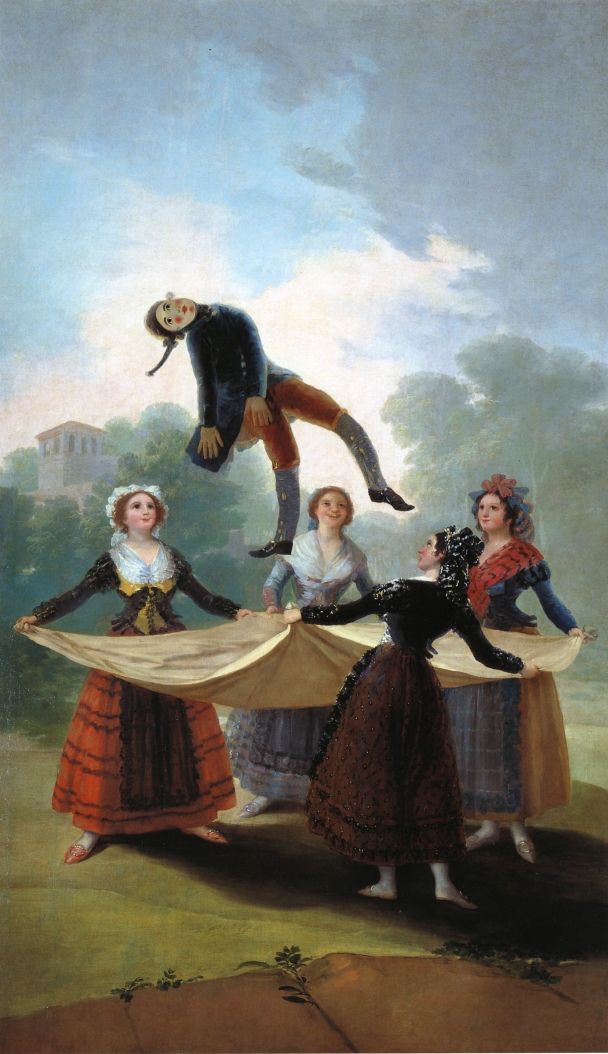Kweiseye is an art criticism blog written by Tom Kwei. If you enjoy this article, browse the archive HERE for more than 60 other critiques of both artists and exhibitions. Any questions/queries/use: tomkweipoet@gmail.com.
When his works are collected together and poured over, Francisco Goya can seem frenzied and unpredictable in his approaches. Here for example is a painter who depicts a bygone innocence of the Spanish past as richly as he imagines executions of native soldiers by French troops. Here also is a conferred ‘Painter to the King’ whose subtly subversive royal portraits share stylistic similarities to his ‘Los Caprichos’, a haunting passion project of the artist that aimed to explore, ‘the extravagances and follies common to every civilized society’. What ties the entire oeuvre of Goya together though is a distinct sense of something more beneath the paint, a preoccupation not just with satire or veiled critique, but an appeal to feeling beyond the mere rapture of his brush.
The Straw Mannequin (1791 – 1792)
Despite this no doubt being a familiar carnival sight to the Spanish aristocracy whom commissioned it, ‘The Straw Mannequin’ cannot be anything but acutely disturbing to the modern eye. Taking aside for a second the simple fact that there is a corpse-like dummy being flung high by women who seem enchanted by the act, it is the very moment that Goya picks to crystallise that lends the image such a sinister quality.
Had the mannequin been dropping down head over heels or in some other less recognisably human pose, its discerning qualities could perhaps have been discarded in favour of the jubilation being had. Yet by showing ‘him’ behaving anatomically quite how a person would look thrown upward, Goya revels in the disjunction between the real and the imitative. Look at the slack, unresponsive limbs. The buckled shoes pointing out askance beneath ornate britches. It’s lifeless, painted face that arches back on what looks like a broken neck with a ponytail swinging behind. The figure, of course, isn’t real and feels nothing. But the subtle blurring keeps us as entranced as the foursome.
What is Goya saying here though? Is this a commentary, suggesting what strong women can do with a weak man? Or is the net cast wider and this is more about mob rule and its influence on the single individual caught in the middle? The circumstances are murky, what is clear though is that Goya’s revered attention to detail isn’t just regulated to the action at the centre.
The unusually tall image allows the artist to achieve a fantastic level of depth at both ends of the work. At the base his brush is keen and nuanced. The shadow of the blanket varying in heaviness and shade depending on where it is pinched and the buckles of the women beneath sparkling wonderfully under cover. Above the straw filled body we have a fantastically imagined sky whose washes of wispy cloud ape the golden backed green of the trees.
Duel with Cudgels (1820 – 1823)
Both of these men feel inextricable from their landscape. The fighter on the right appears to be fading into the white of the backdrop, his legs cut off from the ankle down, one and the same with the sediment beneath. On the left, his opponent is similarly entrenched, his own cudgel appearing to be the source of the smoky clouds behind There is a grisly madness to this desolate scene. A futility and sadness, a sense that whoever is the victor will still be trapped, still have gained nothing.
With their heights so exaggerated and their bodies so cemented, perhaps the two men are representative of some higher order. Some symbols of how the powers that be are effectively rooted within the same world and that murdering the other is only serving to ruin the world around them. The two even seem spotlit by the landscape’s sunshine, the left warrior’s cudgel also appearing to tear through the clouds themselves.
Up-close however, and the painting definitely should be seen up-close (click it) for its wonderful treatment of diaphanous colour, individual faces and emotions are detectable which draw the magnitude down to a more painful, one on one confrontation. A fight that has been going on a while it seems. The man on the left all bloodied up and continuing, his opponent cocked back on the left ready for a huge swipe lest he be blocked.
Enjoy reading that? Click HERE to see a list of all the art analyses on Kweiseye to date.
To keep up with the blog and all the art I write about, follow me right here on this blog or here @tomkweipoet


